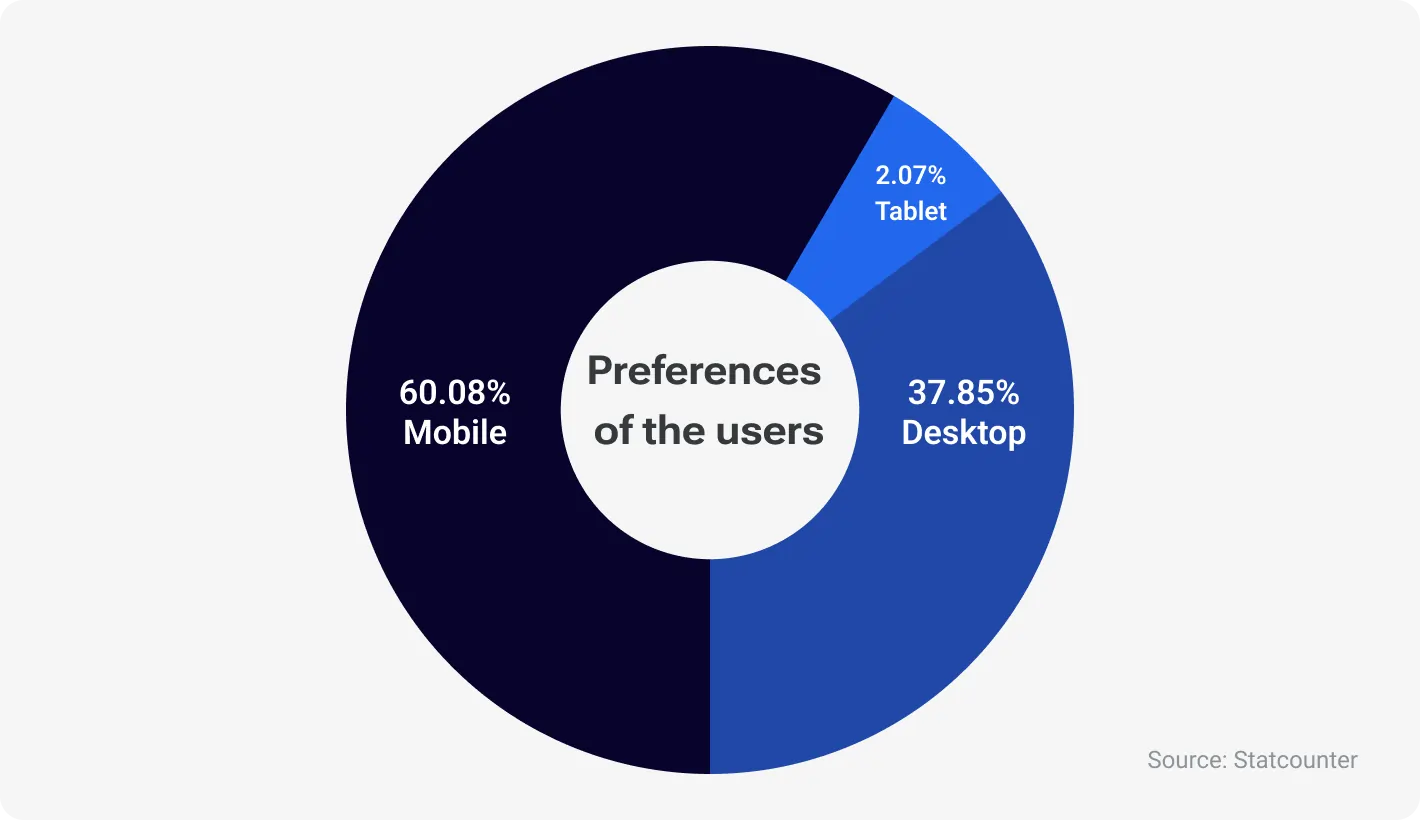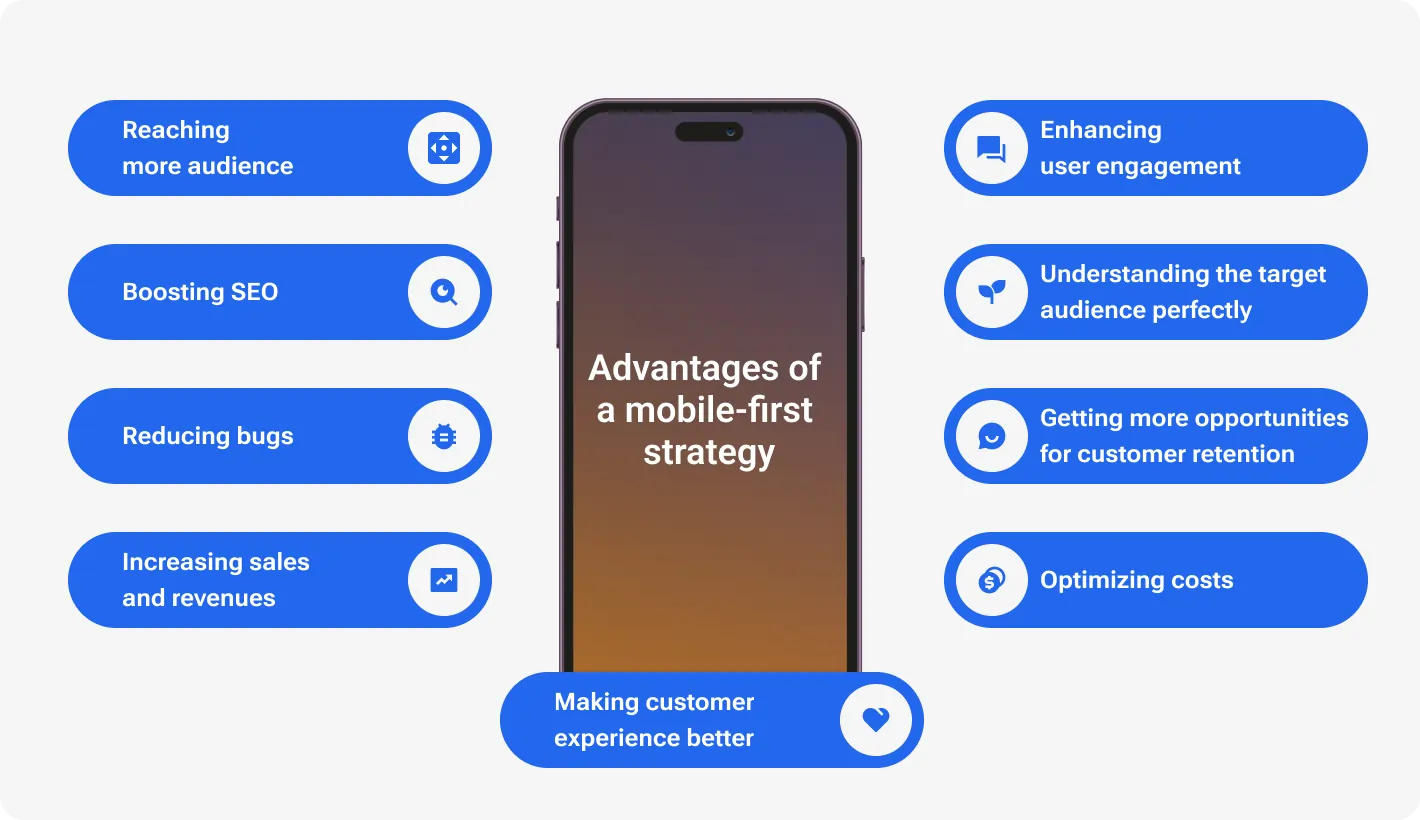Outsourcing to Czechia

How much does it cost to hire developers in Czechia?
Dec 2nd 25 - by Devico Team
Find out how much it costs to hire software developers in Czechia in 2025. Compare hourly rates, roles, and factors that impact pricing.
Hire
Hire by role
Hire Front-end developers
Hire Back-end developers
Hire Full-stack developers
Hire Android developers
Hire iOS developers
Hire Mobile developers
Hire AI engineers
Hire ML engineers
Hire Automation QA engineers
Hire Blockchain developers
Hire Data engineers
Hire Cloud engineers
Hire by skill
Hire JavaScript developers
Hire TypeScript developers
Hire Ruby on Rails developers
Hire React Native developers
Hire Flutter developers
Hire Golang developers
Hire React.js developers
Hire Python developers
Hire PHP developers
Hire .NET developers
Hire Java developers
Hire Laravel developers

Digital transformation
September 02, 2024 - by Devico Team
Summarize with:
Mobile technology has conquered the world. As of 2024, 4.88 billion people globally use smartphones. With a population of 8.12 billion people on the planet, we can conclude that about 60% of all Earth's inhabitants use these devices. In the case of taking into account developed countries only, this rate is even higher. For instance, more than 96% of US citizens own smartphones.
Such a huge target audience segment should be considered first and foremost when developing your business. To cater to this group of people, the mobile-first strategy was invented.
It's an approach that puts mobile applications and versions of websites at the top of the priority list. Read further to find out how such a strategy can lead your company to success and how to integrate it into the digital transformation process.
60.08% of users access sites with mobile devices, while only 37.85% prefer desktop versions.

This can be easily explained by the fast-paced rhythm of modern life when every minute counts. To make the most of every second of life, people use smartphones for entertainment and business purposes on the go.
Thanks to mobile devices, a busy person can solve work issues or order some goods right while standing in traffic or waiting in line at a store. Is it quick and comfortable for users? Undeniably!
Many businesses are capitalizing on this by making their mobile applications as user-friendly as possible and optimizing their websites for mobile devices first and foremost. So, the mobile-first strategy can be called the future of digital transformation.
The main tenet of this strategy is creating the mobile version (for the smallest screen) of the website design first. Only then is it adapted for larger screens (tablets, desktops). This is what makes such an approach different from responsive and adaptive design methods where the desktop version comes first.
51% of users report that they learn about new companies they are becoming customers of while surfing the stores of apps on their smartphones. So having a mobile app is a must for upgrading brand awareness.
Furthermore, being available to your customers anytime and anywhere increases the clients’ loyalty. Mobile apps provide many other benefits as well. You'll learn more about them further in the article.
If you already have a desktop version, and you are not going to change the design drastically, develop a maximally adapted mobile version. Pay maximum attention and effort to it to achieve the best possible user experience.
Simply resizing an existing design is not enough. You need to develop the interface as thoughtfully as possible, so that all elements look good, are easy to read, and are convenient to use from a smartphone.
Just creating an application is not enough. To keep your customers engaged and make them more loyal, keep in touch with them constantly. You can do this in several ways:
Add interactive elements to your application. This will create a feeling of dialog with the user.
Provide support right in the app. In this way, it is possible to increase the level of customer satisfaction significantly.
Add push notifications to remind customers about you. It's one of the most effective ways of retention as receivers will definitely see them, unlike, for example, emails that may remain unopened. But do not overdo this: people don’t like aggressive notifications that are sent too often.
Add a survey or the ability to send feedback. This will allow users to feel that their opinion is important to your brand.

The approach to digital transformation that prioritizes mobile apps and website versions brings many benefits to businesses. Here are the most essential of them:
Reaching more audiences. Some people surf the internet only through their smartphones, rarely using a PC at all. To avoid losing this target audience, make sure you have a mobile-friendly version of your website, or even better, develop an app as well.
Boosting SEO. This is no longer news that Google takes into account the user-friendliness of the mobile version when indexing sites. In addition, sites developed according to the mobile-first strategy are usually characterized by faster page loading. This also positively affects the site's position in search results.
Reducing bugs. If you develop a simpler small-screen design first, and then gradually improve and adapt it for larger screens, you can reduce the number of bugs. This will optimize the development process.
Increasing sales and revenues. Recent research on online shopping in the USA has shown that 64% of people use smartphones for this, while only 34% use desktop devices, and 2% — tablets. If the mobile version of the site is inconvenient, then such a huge part of the target audience can just pass by.
Making customer experience better. Not everything that is convenient on a PC is as convenient on a phone. If the mobile version isn't user-friendly, customers who don't always want to use a PC will just bypass the brand. To avoid this, do a good job of developing a small-screen website design, as well as creating an app.
Enhancing user engagement. A lot of people use their smartphones to check social media and messaging apps. And they are more likely to interact actively with brands that are present there. So, you can collect users’ feedback more easily and provide them with faster and more convenient support via social networks and apps like WhatsApp.
Understanding the target audience perfectly. It is possible to collect and analyze more information about customers with the help of an app. For instance, their geolocation, purchasing habits, activity, etc. You can use all this data for better personalization.
Getting more opportunities for customer retention. With the help of an app, you can send push notifications right to your users’ phone screen. This way, you can quickly remind customers about your brand, and your notification is almost 100% likely to be seen.
Optimizing costs. Creating an app gives an opportunity to reduce the number of physical stores or branches of the business. In this way, it is possible to significantly reduce their maintenance costs.

Further from this article, you will find out:
what steps to take to introduce such a strategy to your company;
which methods to use to maximize the improvement of mobile user experience;
real-life examples of successful integration of this strategy to inspire you.
Conduct thorough research to evaluate the current level of usability of your site with small screens.
Also, think about the answers to the questions:
Do you have an application?
Does it cover all the features that customers are interested in?
Is it convenient to use?
If not, why?
How can it be fixed?
Additionally, compare your company with your competitors in terms of user-friendliness from small screens. Research the apps of your competitors and the mobile versions of their websites to draw conclusions about what you need to do to become better than them.
For a detailed and high-quality analysis, it is better to consult specialists who can help you define the goals and methods of implementing a mobile-first strategy.
Research your target audience to understand:
What percentage of your current and potential customers use smartphones?
Do they prefer to access a website via mobile or use an app?
How do they spend their time on their phone: on the web, in apps, or on social media?
How often do they shop on their smartphones?
How much time do they spend on their devices, and when exactly do they do this?
Answering all of these questions will give you a strong foundation for improving your user experience.
Agile development methodology is one of the best options for a business mobile application creation. This approach involves development in several stages (iterations). This allows you to stay flexible, change/add functionality as needed, and test the application's performance as early as possible.
There are many individual factors to consider when designing a website or an app. However, there are some universal tips on how to make an interface convenient for smartphone users.
Here they are:
Simplifying interface. Do not overload the site, especially its main pages, with complex navigation and cumbersome content. All the basic and most frequently used features should be available in a couple of clicks. Use collapsible menus and bottom navigation to enhance usability.
Improving readability. Small text can be uncomfortable to read from a little smartphone screen. Use a larger font so that users don't have to strain their eyes. Also, if the content on a particular page is long, divide it into paragraphs, use lists, and tables, and dilute the text with visuals.
Performance optimization. Work on making the site load quickly. The same goes for an app: its loading shouldn't take an eternity. Also, don’t make it too “heavy” as users don’t like to clutter their smartphones with apps that occupy too much memory.
Adapting interface for touch screens. Mobile users do not have a mouse or keyboard to navigate the site. Therefore, the buttons should be large and easy to press with fingers.
Considering the “rule of thumb”. Smartphone users primarily use their thumbs when navigating apps and websites. Therefore, all the main buttons should be easy to press with this finger.
This approach has helped many companies worldwide succeed. For instance:
Instagram is a world-known social media platform with 2 billion users. It has reached breakneck popularity because it focused on the app primarily.
Uber has grown from a small local startup in San Francisco to a world-renowned company popular in over 10,000 cities around the world. This is thanks to the fact that it allows users to hail a taxi in just a couple of clicks on the go.
Monobank is one of the most popular banks in Ukraine that has attracted over 8 million users in just 7 years of operation. This is because it provides all the services right in the app without even having any physical bank branches (only plastic card outlets).
You can face several challenges on your path of improvement. What are they and how can you overcome them? Find out from the table below.
Cross-platform compatibility
To achieve maximum compatibility with desktop devices as well, it is better to contact professional designers.
Security
Utilize modern technologies such as strong encryption methods to protect user data. Order application development from top-notch programmers to avoid security gaps.
Law compliance
Carefully review the regulations concerning the collection and storage of user data, as well as other aspects related to your mobile app usage. Adapt your app and website to the current law, and make updates when the rules are supplemented or new ones are introduced.
Ever-changing users’ demands
Use agile development methodology to keep adaptable to changing customer behavior patterns and market demands. Use AI/ML technologies to track and analyze user behavior on your site and in your app.
One of the most prominent real-world examples of coping with such challenges is taking strict safety measures by Binance, a popular crypto exchange service. To minimize risks associated with security, the company utilizes a variety of methods, including:
strong data encryption;
thorough user verification;
safety notifications that are sent to customers when some suspicious actions are detected;
real-time tracking of every operation;
personalized withdrawal settings (a user can limit withdrawals only to certain wallets or from certain IP addresses).
You have already learned from official statistics and real-life stories of famous companies that catering to mobile users is the key to success. It helps to attract more new customers, retain old ones more effectively, optimize costs, and achieve many other benefits.
Outsourcing to Czechia

Dec 2nd 25 - by Devico Team
Find out how much it costs to hire software developers in Czechia in 2025. Compare hourly rates, roles, and factors that impact pricing.
Outsourcing to Czechia

Nov 25th 25 - by Devico Team
Compare Czechia and Poland for software outsourcing in 2025. Discover costs, talent, infrastructure, and which country fits your project best.
Outsourcing to Czechia

Nov 18th 25 - by Devico Team
A complete guide to outsourcing software projects to Czechia, learn about costs, talent, benefits, and how to build successful partnerships in 2025.